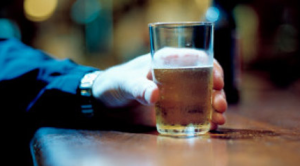Many people believe that coffee is one that that can be used to sober you up. This is proven to be wrong. This is a common misconception held by many people. Drinking coffee when your drunk can also result in a negative outcome causing people to be more alert but still be drunk. This is why many people believe the caffeine sobers you up; it gives you more energy so it cancels out the drowsy effects of the alcohol. This does not mean you’re more sober by any means.
There is no way to bring down your blood alcohol content by drinking the coffee, therefore there is no way it can sober you up from being drunk. The only way one’s blood alcohol content can be lowered is just simply giving it time to get out of your system. According to Psychology Today, “Alcohol metabolism follows what pharmacologists call “zero–order kinetics,” meaning that nothing can speed up or slow down its burn rate in the body’s furnace.” This means the higher the blood alcohol content, the longer it takes for it to get out of your system completely. The reason being that it takes time for your body to metabolize the alcohol in your system. Even when you feel “sober” this doesn’t necessarily mean that your body’s blood alcohol content has gone back to zero. Claudia Hammond writes about the process of how the body metabolizes the alcohol; ” The body processes it in several ways. Mostly it’s broken down in the liver by two enzymes, alcohol dehydrogenase and aldehyde dehydrogenase. After several steps the alcohol is eventually excreted as water and carbon dioxide.”
There have been experiments done to prove this myth wrong. I read about two experiments that did a good job in breaking the theory that “coffee sobers you up.” One of these experiments was done by Mythbusters. In this experiment, the team had done some hand-eye coordination test as the control for their experiment. After this, the team proceeded to drink alcohol and then try the test again. Finally, they drank some coffee and did the last trial of hand-eye coordination tests. The results of this experiment showed that drinking coffee did not improve the ability to do these hand-eye coordination tests. In another experiment written about in WebMD showed similar results. Thomas Gould and Danielle Gulick did an experiment on rats to try to determine if caffeine can sober someone up or not. They took different groups of mice and injected them with alcohol and caffeine. The control group of this experiment was injected with saline. After injecting the mice, they had them try to solve/learn the maze. Hendrick, from WebMD writes, “the scientists tested three aspects of behavior — the ability to learn which part of a maze to negotiate in order to avoid exposure to a bright light or sound; anxiety, which was reflected by time spent exploring the maze’s open areas, and general locomotion.” The results of this study found that the mice injected with alcohol learned less than the mice that were injected with only the saline. Gould and Gulick found that the caffeine did not combat the negative effects of the alcohol injections.
In conclusion, coffee does not help you sober up. The only way for this to happen is for you to wait and let your blood alcohol content to metabolize them back to zero.






